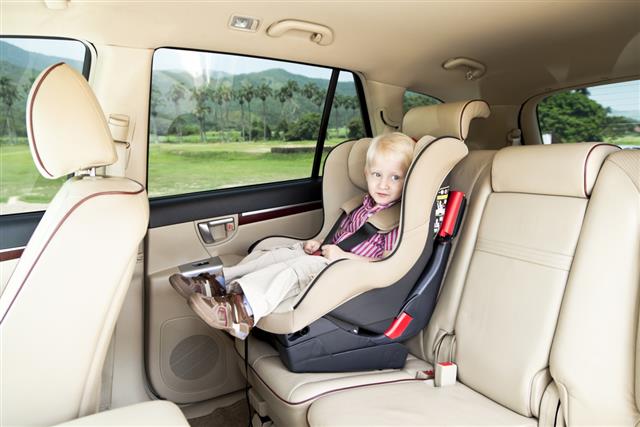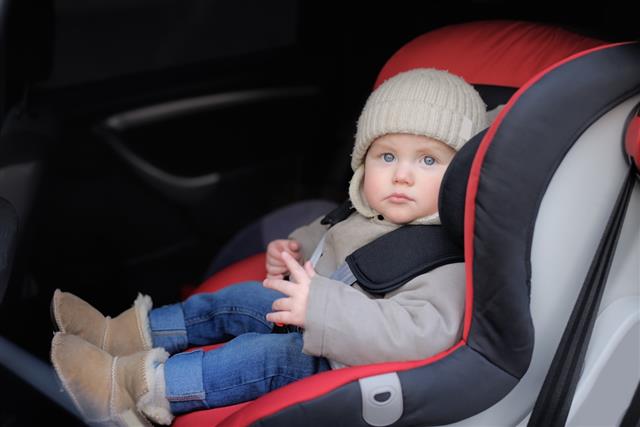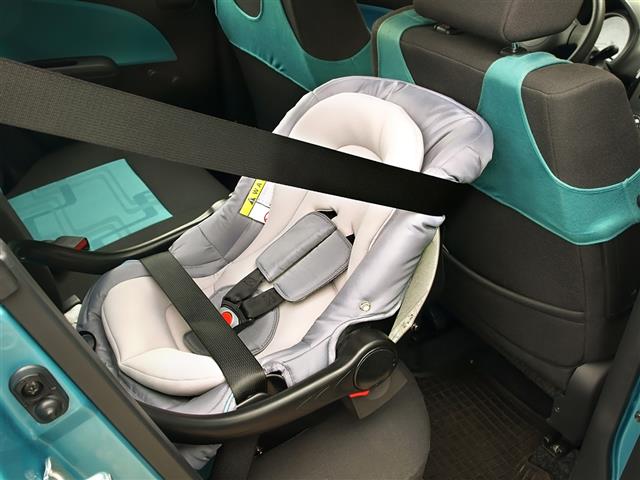
Car seats are for the safety of a child. This article will provide you information on why babies should be seated facing the rear, and when to turn them around. Read on to know the height and weight requirements for forward-facing car seats.
Car seats are classified, based on the age and weight of the children riding in them. Rear-facing seats are built in such a way, that the baby faces the back of the car, as this has been determined as the safest seating option for infants. Car seat laws and regulations, developed by the U.S. State Governments and Canadian Government, take into consideration the safety of babies.
The safety belts in cars are designed with the average-sized adult man in mind. These belts, therefore, cannot adequately protect a small child. Parents are confused about the correct position for the babies, and the most frequently asked questions are:
- “When can my baby’s rear-facing car seat face forward?”
- “Does my child need to be in a car seat?”
- “Do Car Seats Expire?”
In the U.S., as is the case with all traffic laws, you are expected to follow the laws of the road you are driving on at the time, and not the laws of the state you belong to, or are licensed by. The minimum rear and forward-facing car seat requirements are stated in these laws, to help prevent accidental injury or death when your children are riding in a vehicle.
Height and Weight Requirements
- Infants should stay in rear-facing seats until they reach one year of age.
- A properly installed tether strap should be present in the forward-facing seat, to keep it in its best working order.
- According to some experts, the baby can be kept in the rear-facing seat even longer. It will mainly depend on how the seat continues to fit the child. For instance, preemies require longer time to catch up in weight and height, so they may stay in these seats longer than usual.
- Once the babies reach the proper weight (weigh more than 20 pounds), and acquire appropriate skills (they can pull themselves up), they can be moved to a front-facing car seat. Babies and toddlers weighing about 20-40 lbs., and between 1-4 years of age, can ride in such convertible seats. These are the basic requirements.
- Children who are too tall for a forward-facing convertible seat (whose ears line up with the back of the convertible seat), may use a high-backed booster seat. These should also be used by children weighing about 40-80 lbs., and who are 4 years and older. A booster seat raises the kid so that the lap and shoulder belt fit properly. The high back protects the child’s head and upper body. Several states like the District of Columbia, California, and Arkansas have made booster seats compulsory.
- Shield booster seats should not be used for children weighing more than 40 pounds. For children less than 40 pounds also, they reportedly pose a risk of ejection in a rollover crash.
- When children can sit without slouching, with their feet on the floor of the vehicle, and their back straight against the back seat cushion so that their knees are over the edge of the seat (usually those weighing about 80 pounds, and are 57″ tall), they can use a seat belt. It is important that the lap belt should lie across their hips, and not across their stomach. The shoulder belt should fit across their shoulder, and not across their neck or throat. It is compulsory to use both these belts.
- You should always check the manufacturer’s rear-facing height limit. It is possible that your baby is in the weight limit to stay safely in that seat, but be sure that the baby is not too tall. The safety advantages far outweigh convenience.
- Convertible car seats can be the solution to the problem of a fast-growing child, as they can be used as rear-facing ones until the child is older, and then converted to front-facing ones. There are stroller combo seats that can also be made to fit in a baby stroller. This way, you never have to take the baby from the seat.
- Here is some information about booster seats. These are required in the car, for growing children. According to the rules “a child under the age of 8, who weighs between 40 and 80 pounds, and is under 4 feet and 9 inches tall, must have a booster seat when in the car“. Once your child outgrows these given limits, a regular seat belt can be used.
- The safest place for a child under 12, stated by law, is in the back seat. For adults, during crash, safety belts distribute the impacting force to the strongest parts of the body, the hips, and shoulders. Baby car seats are designed to absorb some crash forces, and spread the remaining over a larger area of the body. Many states are seeking to change their laws, requiring children to stay in restraints through 8 years and 80 pounds.
You should consider using car seats while traveling by air or train as well. The most recent studies on this subject have revealed the fact that toddlers are up to five times safer if they remain rear-facing until age two. Turning their car seats around isn’t a milestone to rush on. In fact, it’s a step down in safety. Hence, don’t be in a hurry to make the big switch.




